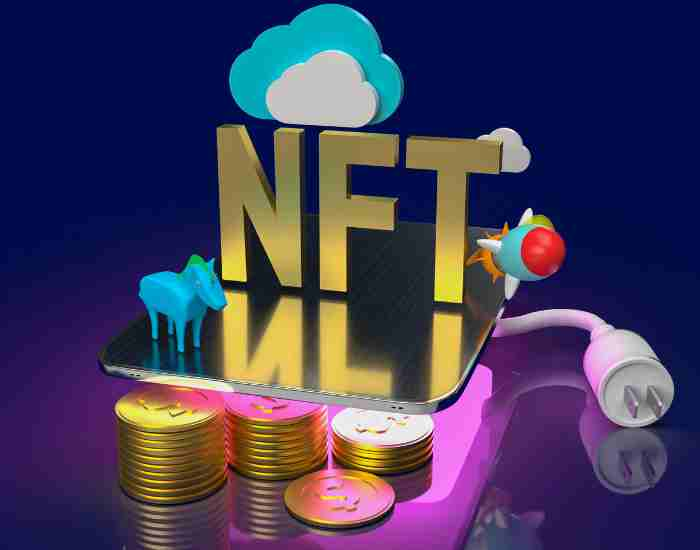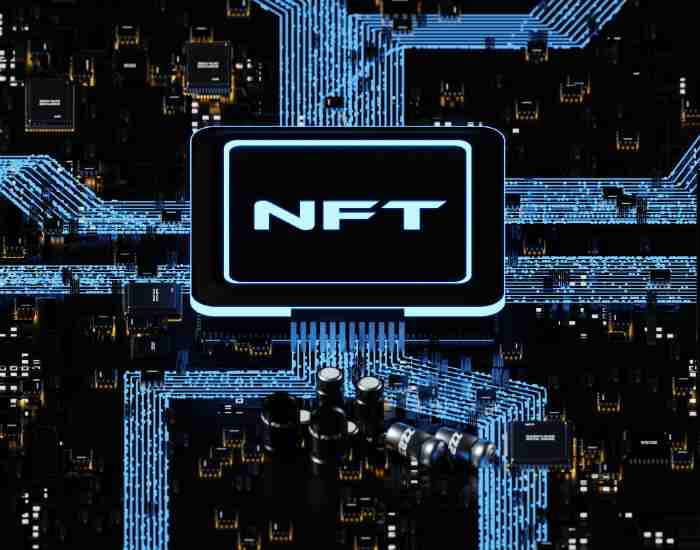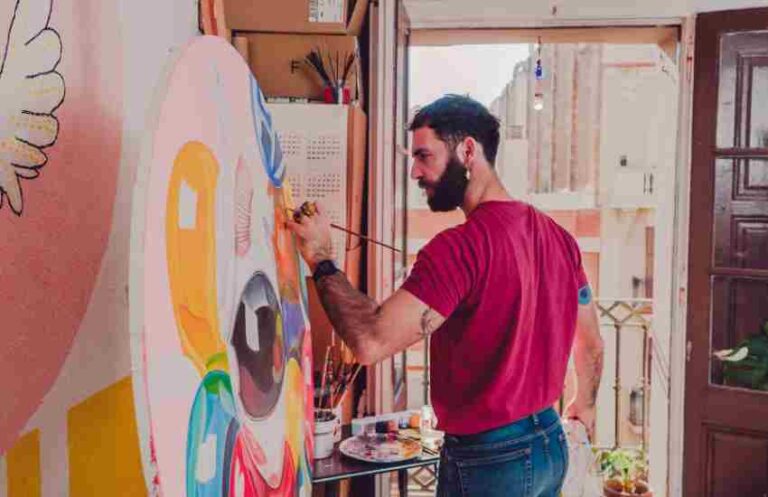With the emergence of non-fungible tokens, the fusion between traditional artwork and digital cyberspace has become achievable. At the basic end, NFTs are images that are attached to unique digital tokens, said images or artistic works are usually stored as MP4 in some form of virtual wallet, such as Ethereum. What sets NFTs apart from other cryptos is that every token is different, thereby giving many functions including proof of ownership and verification of authenticity on the blockchain.
Moreover, the NFT art market has grown in leaps and bounds, with both artists and past and future art collectors being affected. NFTs allow the artist to easily present their work, find audiences across the globe, and make money off of their artwork in a way previously impossible. For collectors, it provides a plethora of artwork from different areas and cultures, and most importantly the ownership of the art has been proofed and certified by the blockchain.
In this guide, aspiring NFT creators and sellers will be assisted in their first steps towards achieving their dreams. Regardless of whether you are a well-known traditional artist who wishes to convert their artworks into virtual form or a newcomer who tries to make their first debut, this guide seeks to help artists in understanding how the process of creation, minting and selling NFT art works.
The initial basis of this guide is to underline the possibilities brought about by the innovation of blockchain technology. It is no longer only a ledger for cryptocurrencies but also serves as the basis of the NFT universe and guarantees safety, uniqueness, and transparency. Thanks to this technology, artists are now able to transform their digital arts into precious and sought-after digital properties thus broadening their means of creativity and monetizing opportunities.

What are NFTs?
The two worlds of digital and art have met and conquered all problems through Non-Fungible Tokens, otherwise known as NFTs. Simply put, NFT refers to a digital asset on a blockchain which affirms that the asset is of non fungible nature and can’t be copied. This revolution has transcended the use of Bitcoin or Ethereum however, NFTs remain centralized and are not interchangeable with one another.
Definition of NFT (Non-Fungible Token)
Now, every art piece has a way of certifying it ownership, this is through an NFT. An NFT is a unique, Cryptologically owned form of seal that guarantees ownership of a specific digital. This digitized process of Tokenization can only be achieved through blockchain and does not still explain the security and stability of the asset.
How do NFTs Exploit the Unique Properties of Blockchain Technology for Added Features?
Every new technology comes with features that are case sensitive and unique to it, an example is the lack of assurance of ownership when it comes to an NFT. Blockchain is the primary technology with a focus on digital certificates, and with its centered check board, every transaction can be as reliable as the last one and near impossible to alter. The last piece of information that each consumer can see is the start date of the creation, where it has been owned, and what it has gone through. This ensures every user of NFT is safe and fulfills their requirement.
It is a well known fact that each NFT is distinct and can never be replicated, thanks to the cryptographic approach of blockchain. To create an NFT, a process called ‘minting’ is used, which involves tokenizing the digital asset and establishing a trustless link of the real object and its digital representation on the blockchain. It is this property that establishes the NFT’s value.
Importance of NFTs in Securing and Verifying Ownership in the Digital Space
NFTs provided the digital world with an effective way to own property, and assets, as well as provide the assurance that it is authentic. For physical art, there are clear statements as to who owns it and its history. This same level of confidence and transparency is now available for digital creations, thanks to NFTs.
We have gone beyond an era where digital art could be duplicated indefinitely without clear ownership, and such constraints have no doubt forced hindrance to creation, artists can now present an actual form of ownership for what they wish to strive for, policy makers and the collectors of art in this case will enthuse, along with any other parties that wish to indulge with the conflicts surrounding the original version of the art piece. This continuing development is noteworthy for the entire business, including customers eager to know that they own an original and genuine piece of an elaborate progression.
Mooring the NFT Ecosystem: Market Places such as Rarible and OpenSea
The environment dealing with NFT and purchasing of these assets often means buying and selling through the platforms that work explicitly on NFT, for example Rarible or Opensea.
Opensea, as the name suggests, enables users to possess a wide range of NFTs. It is a website that permits creation, purchasing, and selling of digital assets thus embracing decentralization as well as inclusiveness. Rarible, on the other hand, enables the creation of their unique brand of NFTs directly on the platform, consequently removing barriers to the direct creation and sale of NFTs.
Such platforms perform a similar role to that of art galleries but these are virtual ones, which means that artists can reach clients all over the world and clients can access different types of digital art. Worry not, because by the time you finish reading this guide, you should have an understanding of how to use these marketplaces which will enable you to sell your art effectively.

Benefits of Creating NFT Art
Through Non Fungible Tokens also known as NFTs, the two worlds of digital and art have met and conquered all problems. Put simply, a NFT is a digital certificate of ownership that confirms that the asset is non fungible and non reproducible through the blockchain. This development has gone beyond the utilization of Bitcoin or Ethereum but, NFTs still have no interdependence and are not interchangeable with each other.
Definition of NFT (Non-Fungible Token)
Hence, every art piece has a mde of certification of its possession and this is by way of an NFT. A token is defined as an original cryptographic owned stamp which is a key for digital possession of that particular asset. This tokenization process is not definitive in itself but still explains the digitized way of ownership which is only possible through the use of blockchain.
How do NFTs Utilize the Unique Benefits of Blockchain Technology in Order To Satisfy Users More Fully?
Each new technology has features that are case sensitive, unique to the specifics for example a non-fungible token (NFT) does not guarantee sovereignty. The primary technology is blockchain that concentrates towards digital certificates and with its center check board every transaction can be made as trustless as the preceding one and practically impossible to tamper with. All consumer can see as the last piece of information is the rumen of when the item was created, where it has been kept and what it has underwent .Therefore every user of NFT is well protected and the need of the user is satisfied respectively.
NFTs are built on the basis of blockchain which makes them unique and irreproducible, this is a widely known fact. To produce the nft, a method termed ‘minting’ is employed where there are tokenization of the virtual asset and the creation of a trustless bond between the physical item and its virtual 3D version on the blockchain. It is this property which determines the price of the NFT.
Role of NFTs in Proving and Protecting Ownership in the Digital World
NFTs enable to the digital universe a credible mode of possessing property, assets or even guarantee the degree of its verifiable authenticity. In case of real art, there are clear statements as to who has it and its lineage. Now, with the use of NFTs, we have the same degree of confidence and transparency on digital creations.
Gone is an era whereby a piece of digital art could extend to any number of copies and not have a proper owner which has no certainly hampered creation, artists can now offer a physical representation of what they want to create, policymakers and collectors of art for example will be excited together with other stakeholders that would want to play out the battles surrounding the art’s original copy. This continuous evolution is quite significant for the whole industry including clients who are eager to believe that they are part of the original factual evolution of a complex structure.
Securing the Functions of the NFT Ecosystem: Marketplaces like Rarible and OpenSea
The realm concerning the NFT and its acquisition has often been narrowed down to the buying and selling of NFTs through platforms that deal solely with NFT like Rarible or Opensea.
Opensea, as the name connotes, gives the users the capability of holding numerous NFTs. It is a marketplace for the creation, purchasing, and selling of digital assets and therefore, it is decentralized and inclusive. On the other hand, Rarible allows users to mint their proprietary brand of NFTs right on the platform, thereby eliminating the obstacles to the minting and trading of the NFTs.
Such platforms perform the functions of virtual art galleries, hence artists are able to interface with customers all over the world and customers can view various digital art by different artists. Worry not, because by the time you finish reading this guide, you should have an understanding of how to use these marketplaces which will enable you to sell your art effectively .




